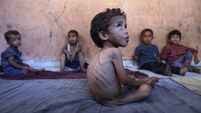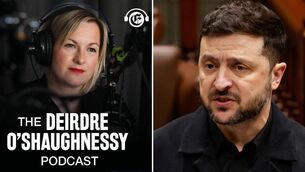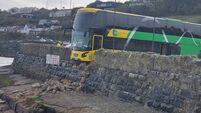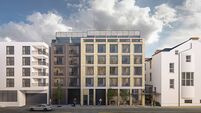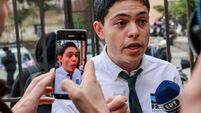Tony Scott embodies the history of the Young Scientist project
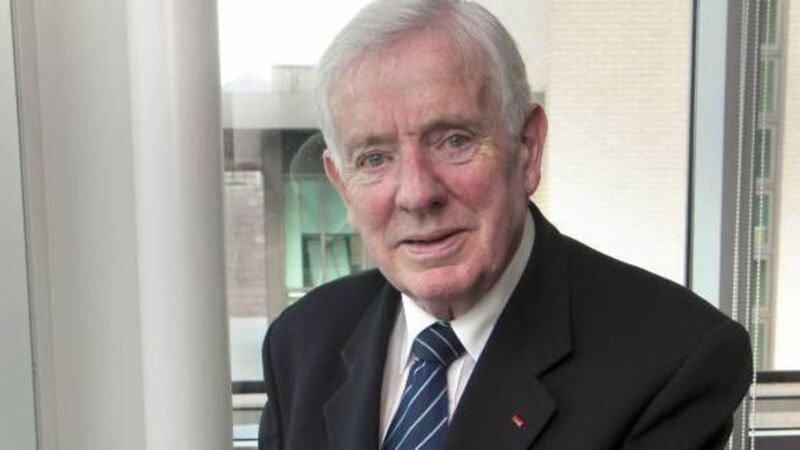
Scott embodies the history of the exhibition, devising the concept with Fr Tom Burke in 1963, but unsure then exactly what results their experiment would produce. It is fair to say, though, that Africa would not have figured in any model conceived by the duo.
“It’s nice to see a seed planted in Tanzania and growing. I went there last year for the first exhibit and again this year. On my first visit, when I went into the hall, if I closed my eyes, I could have been in the RDS. It is a mirror of our own exhibition and the prize for last year’s winners, was a trip to attend the BT Young Scientist & Technology Exhibition. The winners — three girls — are planning to study architecture, medicine and law when they finish school.
“A number of other African countries have also enquired about staging an exhibition, but we want to get it bedded down in Tanzania firstly and have encouraged them to look at the set-up there.
“Credit must be given to the Irish Government, particularly Irish Aid and it’s good to see it is sponsored by Ireland,” said Scott, who added that “people also came to us from the UK five years ago and have since started the Big Bank UK Scientist and Engineering Fair”.
As is well documented, atmospheric scientists Scott and Fr Burke staged the first exhibition after coming across ‘science fairs’ while conducting research in 1963 in New Mexico. They decided this kind of ‘hands-on’ approach would benefit Irish children. What is not so well known is that Scott was a pupil of Burke.
“I had a fantastic teacher in Fr Tom Burke. He taught me in Terenure College and joined me in UCD. It was a unique relationship.
“In the first exhibition, I was a backroom boy and continued on in that role for the initial years, but since then I have been out front judging. Before the first exhibition, I was unsure how it would do and, after it succeeded, we made the decision very quickly that the Mansion House would not be big enough, so we moved to the RDS. I was on the RDS science committee and it made sense,” said the Dubliner, who denied that he deserved kudos: “I achieved nothing; it was the young people, their teachers and their parents. Without them, it would not have continued.”
Testament to the exhibition is that it overcame a number of tests.
“The year we weren’t allowed run because of the foot-and-mouth outbreak was tough. We held a smaller exhibition at Easter in Jury’s Hotel in Ballsbridge in its place. The other one that caused angst was when a heavy snow in 1982 ground us to a halt, but we did succeed in picking a Young Scientist. We couldn’t get the students home and we had to put them up in hotels around Dublin. Some were in the city until the following Tuesday!”
Thirty-one years later and BT staged its largest Young Scientist & Technology Exhibition: over 1,200 students with 550 projects participated last January, while over 45,000 people visited.
“I would liken it to the Kilkenny hurling team in that success breeds success, but I think its strength is that it gives young people a chance to explore science outside the classroom, outside their standard courses. Participation in the exhibition teaches students how to research a topic, then how to carry out experiments, and then to present their topic to the judges. They learn how to communicate, both in print and verbally. When I was their age, I don’t think I would have had the confidence to do it. Young people, are fantastic, but what’s also good is the number of girls who have won. It’s a myth that boys can only do science. The exhibition roll of honour is proof that the opposite is the case.
“It’s important to note, too, that we call it an exhibition, not a competition, because we want people to display their work. It is very important that students’ work gets exposure.”
Asked about his standout projects, Scott replies “lots”.
“I remember the first group project which won was entered by William Murphy, Gareth Clarke and Turan Mirza from Carrickfergus Grammar School on the topic of robotics. There was also a lovely project in 1981 by Catherine Conlon on the strength of the fibres in a spider’s web. It was amazing. The first winner, John Monahan, has achieved so much and he gives credit to the Young Scientist for getting him going. I also remember a project prompted by the fact 25 years ago a boy had to get down off his father’s tractor to open gates. He designed a device which could open the gate from inside the cab. Now, such automation is all around us,” said Scott, who also picked out Cork for producing eight winners: “They have fantastic teachers, who inspire their students.”
As for changes in the projects over the years? “They have become much more sophisticated. In the early days, if students wanted to find out things, they would go to the library. Now, they just sit at a computer at home. What’s available on the internet is almost limitless and it gives them greater scope. One of the difficulties we have is that this year, for example, we had almost 2,000 projects submitted and had to get it down to 550. That is the optimum size, to give it the attention it needs over the two-and-a-half days, but, sad to say, many of the projects that are not selected to appear in the RDS are very good.
“Also, while we have 82 judges, they don’t know everything. We once had a winning project that was so good, we could not believe it had not been done before. We consulted with experts on the west coast of the US and they confirmed it was original. Getting in experts is not unusual. We spend a lot of time making sure a project is good science and is original.”
It is a credit to the standard set by the exhibition that Irish students have dominated its European counterpart since they first participated.
“We have been competing in Europe for 24 years and we have come back with a first in 14 of those years. This is based, I think, on the children’s interest in their projects and by how well they put together their projects. The exhibition sets a high standard, and qualifying is an achievement in itself.”
Successful Irish students also get to compete in the US at the Intel International Science and Technology Fair, in which Scott has also judged and which features about 2,000 projects.
“The Young Scientist winner always goes to Europe, but Intel takes the best project in the physical sciences to compete in the US and Irish students have also won prizes there,” said Scott.
He firmly believes the exhibition’s progress will be determined by its participants.
“Science does not stand still and that fact means the projects will get better. The exhibition changes every year to reflect this. For example, in the first exhibition, the projects were divided into categories for boys and girls and also decided by school subjects. We have to continue to at least try to improve. It is a good product, but that is not to say a good product can’t be better,” said Scott, who is not averse to dreaming that the concept may someday blast off for the Red Planet.








